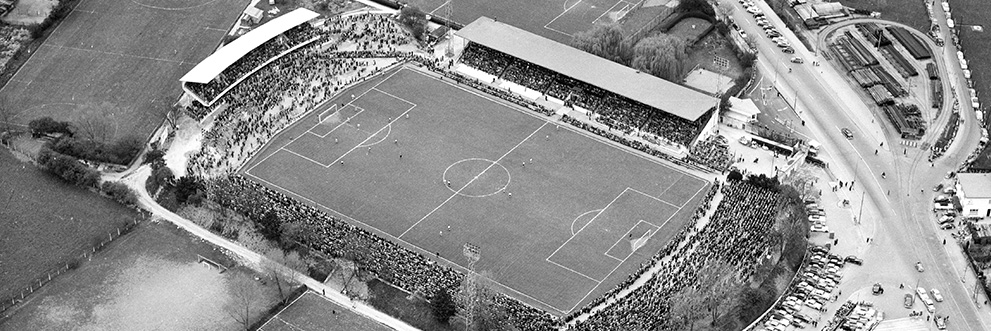The history of the stadium

Hardturm Stadium, Zurich
The Hardturm Stadium in Zurich was the home of Grasshopper Club Zürich for 78 years, from 1929 to 2007. The Swiss championship record-holders celebrated 20 title victories in this unique football ground, with many a memorable match at both national and international level being played out here at Hardturmstrasse 321, Zurich. This much-loved venue also hosted international games, such as matches at the 1954 FIFA World Cup.
After spending years searching for a suitable home for the Grasshoppers in the city of Zurich, Walter Schoeller, long-time club Chairman and bearer of the nickname "Mister GC", finally found what he was looking for in 1929. Schoeller acquired the "Hardturm" site and made it available to Grasshopper Club Zürich free of charge. When it was opened, the stadium boasted a capacity of 27,500. Earthwork constructions formed standing terraces, while seating was also available in the wooden main stand or in turfed seating areas.
In 1934, a devastating fire broke out in the Hardturm, destroying not only the stands but also the GC archive. The main stand and the Treml stand subsequently had to be rebuilt.
On 11 April 1956, the stadium hosted the first football match on Swiss soil to be played under floodlights. The fixture was between Switzerland and Brazil. The main stand burned down again in 1968, after which another stand was built opposite (South Stand). A further new stand (East Stand) was added in 1986, marking the centenary of Grasshopper Club Zürich. By this point, the stadium had increased its capacity to 38,000. The new West Stand was finally completed in 1998.
The final ball was kicked at the Hardturm on 1 September 2007, in a championship match between GC and Neuchâtel Xamax. After the game, the GC fans said goodbye to "their" stadium, grabbing pieces of the pitch and seats to take away with them as souvenirs while a 15-minute film showing "GC highlights at the Hardturm Stadium" flickered across the video wall. The stadium was then shut for good and demolished a year later. After several solutions were considered, the decision was made to build a new football stadium for both Zurich clubs on the same site.